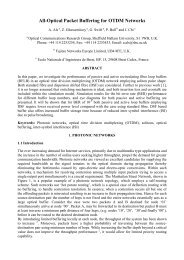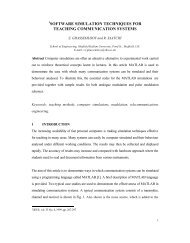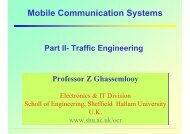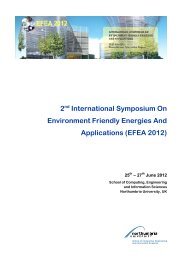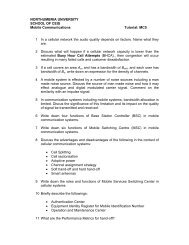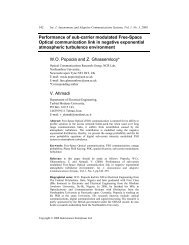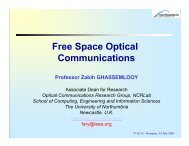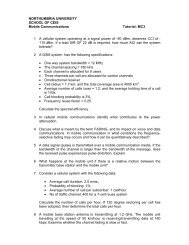Optical Time Division Multiplexing - Northumbria University
Optical Time Division Multiplexing - Northumbria University
Optical Time Division Multiplexing - Northumbria University
You also want an ePaper? Increase the reach of your titles
YUMPU automatically turns print PDFs into web optimized ePapers that Google loves.
OTDM - Issues<br />
• High speed electronics:<br />
ú Current ICs supporting 40 Gb/s will be available by 2001<br />
ú 40 Gb/s receiver are already available<br />
• Source: short pulse (tens of fs) and spectrally pure-<br />
• Gain switched semiconductor laser (broad source)<br />
• DFB laser (most suitable)<br />
• Mode locked fibre ring laser (pulse width < a few ps)<br />
• Semiconductor mode locked ( higher pulse width and not as pure as<br />
MLFL)<br />
• <strong>Multiplexing</strong><br />
ú Electro-optically<br />
∗ Passively<br />
• 3 R regeneration:<br />
ú using semiconductor optical amplifier ∗ or nonlinear devices




